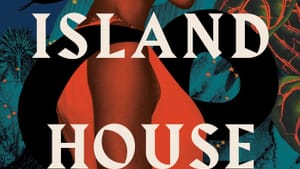Stay in the Loop
BSR publishes on a weekly schedule, with an email newsletter every Wednesday and Thursday morning. There’s no paywall, and subscribing is always free.
The country that claims you
‘Red Island House’ by Andrea Lea

Race, class, colonialism, and gender clash and converge in Red Island House, the stunning new novel about foreigners in Madagascar by Philadelphia-born author Andrea Lee.
Shay Gilliam, a Black woman, is a scholar and academic hailing from Oakland, California. She’s married to Senna, an older white Italian businessman who, early in their marriage, decides, “with the violent sense of yielding that an aging man feels when he plunges into an infatuation with a young girl,” to buy and build on a beach in Naratrany, a small island of Madagascar. The result is the Red House, a mansion named for its iron-oxide painted floors, which over the course of 20 years becomes both a paradisal fantasy retreat and a symbol of colonialism, conquest, and exploitation.
Madagascar fables
The novel is structured in 10 episodic chapters that can be read as their own complete and distinct short stories (two have been previously published in The New Yorker). Each chapter follows mostly white and European Madagascar residents and visitors, or vazahas, including rivalrous bar owners, dissolute catamaran operators, touched missionaries, and lecherous old men who prey upon the island’s beautiful, young—and poor—Malagasy women.
Told from Shay’s third-person point of view, these stories play out like fables, often ending in tragedy for the outsiders due to their hubris, violation of the sacred, and treatment of the island and its residents like an amusement park. Some stories are outright gothic, such as the introductory “The Packet War,” in which Shay and her housekeeper Bertine must employ the services of a local shaman to expel Kristos, a Svengali-like employee who has cast a spell on Senna and is able to infiltrate the house because Senna has not performed the ritual housewarming and welcoming of the community.
The act bonds the two women and binds Shay to the house, which she does not entirely welcome. For Shay, the Red House is an uncomfortable reminder of the plantation system that enslaved her ancestors. As its mistress she is keenly aware of her position as a Black foreign woman of privilege employing people who look like her and hosting the very visitors who exploit them. Shay strives to stay above it all by keeping her relationship—and obligation—to Madagascar light; she and Senna do not think of the country when they are at home in Milan, as if “Madagascar should be considered somehow outside the places that matter deeply to them.”
The fairy-tale price
However, Madagascar will not be so easily forgotten. As in all fairy tales, a price will be paid. “You can’t just come into a country, build a big house, and take what you want,” she is told. “The country comes into you as well, into your blood. And so the land you set out to plunder ends by plundering you."
Lee, who like her protagonist lives in Italy and vacations in Madagascar, does not share Shay’s detachment, though sometimes she risks doing too much work for the reader, making connections and posing questions that she answers in the thoughtful conclusions at the end of each story. But she depicts Madagascar—the Malagasy and the vazahas alike—with compassion and specificity in prose that is sumptuous, detailed, and vivid. Though Red Island House feels epic and mythic in scope, at its core it is about lives, relationships, and the hope for renewal in the face of white supremacy, capitalism, and colonialism.
Image description: The cover of the book Red Island House, by Andrea Lee. A Black woman in a red dress stands in profile against a backdrop of foliage and night sky. A black snake wraps itself around her. Superimposed over them in white text are the title of the book and the author’s name. At the very top of the image are the words in white, “A ravishing book of uncommon depth.” – GISH JEN, author of The Resistors
What, When, Where
Red Island House. By Andrea Lee. New York: Scribner, March 23, 2021. 288 pages, hardcover; $27. Available at bookshop.org.
Sign up for our newsletter
All of the week's new articles, all in one place. Sign up for the free weekly BSR newsletters, and don't miss a conversation.

 Kirsten Bowen
Kirsten Bowen